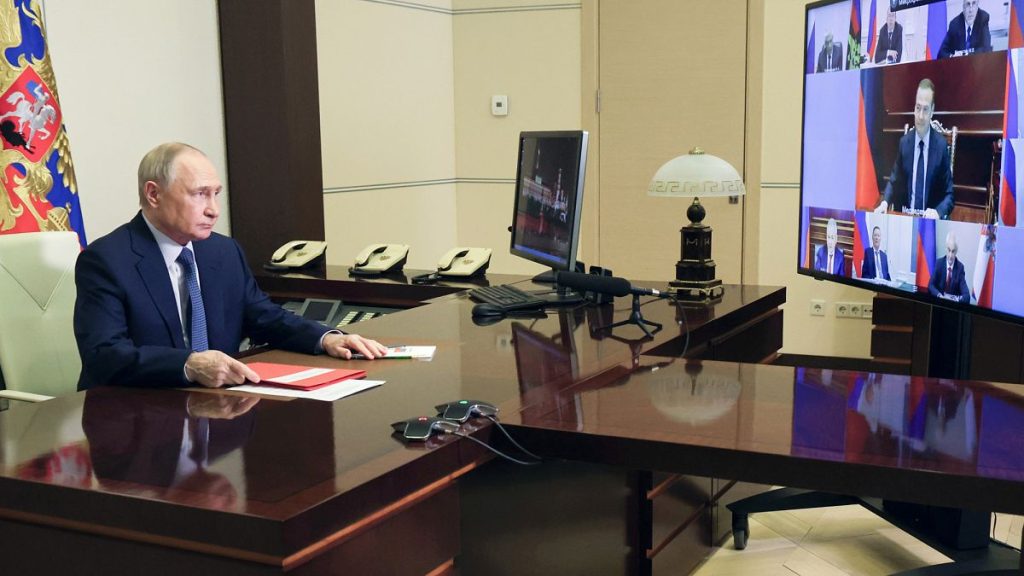In a notable development in the ongoing conflict between Russia and Ukraine, Russian President Vladimir Putin announced a temporary ceasefire coinciding with the Easter holiday. This ceasefire is set to begin at 6 p.m. Moscow time on Saturday and will last until midnight following Easter Sunday. Ukrainian President Volodymyr Zelenskyy, however, criticized the ceasefire as a manipulation of the ongoing humanitarian crisis. Meanwhile, both sides participated in a prisoner of war exchange, which has brought some relief amid the escalating tensions.
| Article Subheadings |
|---|
| 1) Announcement of the Ceasefire |
| 2) International Reactions and Response |
| 3) Prisoner of War Exchange |
| 4) The Context of the Conflict |
| 5) Agenda for Future Discussions |
Announcement of the Ceasefire
The recent ceasefire declaration by Vladimir Putin was made during a meeting with the Chief of the General Staff, Valery Gerasimov. Putin stated emphatically, “Guided by humanitarian considerations, today from 18:00 to 00:00 from Sunday to Monday, the Russian side declares an Easter truce.” This comment reflects the Kremlin’s intention to temporarily halt military operations to coincide with a significant religious observance. The ceasefire is expected to allow civilians in affected areas a brief respite during the Easter period. Nevertheless, Putin made it clear that Russian forces must remain vigilant and prepared for any potential violations of the truce.
International Reactions and Response
Ukrainian President Volodymyr Zelenskyy was quick to respond, condemning the ceasefire as “another attempt by Putin to play with human lives.” He took to social media platform X, emphasizing that alerts for air raids were proliferating throughout Ukraine and suggesting that Russian military activity, including the use of Shahed drones, contradicted the claims of a ceasefire. Zelenskyy questioned the sincerity of Putin’s humanitarian approach, implying that the timing was strategically calculated to dazzle international observers while maintaining military pressure. This response underlines the deep skepticism that Zelenskyy and other Ukrainian officials harbor regarding Russian intentions.
Prisoner of War Exchange
In a parallel development, both Russia and Ukraine conducted a significant exchange of prisoners of war on Saturday. Reportedly, Russia’s Ministry of Defense confirmed the return of 246 Russian service personnel from territories under Ukrainian control. Additionally, a goodwill gesture led to the transfer of 31 wounded Ukrainian personnel in exchange for 15 Russian soldiers requiring urgent medical attention. This exchange was met with relief on both sides, as it involved 277 Ukrainian servicemen being welcomed back under Zelenskyy’s leadership. The involvement of international mediators, particularly the United Arab Emirates, has been recognized by both parties, signifying a potential diplomatic path amid the ongoing conflict.
The Context of the Conflict
The backdrop of these recent developments highlights nearly three years of conflict that has severely impacted both nations. Tensions have escalated rapidly since Russia’s annexation of Crimea in 2014, leading to a prolonged accommodation of military engagements. The latest ceasefire announcement arrives at a time when diplomatic negotiations have stalled, often undermined by escalating violence. Vladimir Putin’s ceasefire call, though intended to align with Easter traditions, faces criticism for its timing, especially as Ukraine refuses to view it as a sincere attempt for peace. This environment complicates any future discussions aimed at de-escalation.
Agenda for Future Discussions
The prospect of future negotiations between Russia and Ukraine remains fragile. Ukrainian Foreign Minister Andrii Sybiha referenced an earlier agreement reached in March regarding a proposed full ceasefire, which Russia flatly rejected. Such dissonance complicates the diplomatic landscape. After Donald Trump made remarks about negotiations between Ukraine and Russia reaching a critical stage, the international community is closely monitoring the situation. Analysts warn that while ceasefires can serve as temporary respites, they often do not address the root causes of the conflict. Therefore, establishing a roadmap for lasting peace and unity remains imperative.
| No. | Key Points |
|---|---|
| 1 | The ceasefire announced by Putin is set to last from 6 p.m. to midnight following Easter Sunday. |
| 2 | Zelenskyy criticized the ceasefire as a manipulation and emphasized ongoing military threats. |
| 3 | A prisoner of war exchange occurred, with hundreds of soldiers returned by both sides. |
| 4 | Previous ceasefire agreements have been met with skepticism and rejection by Russia. |
| 5 | International mediation has emerged as a potential pathway to resolve ongoing tensions. |
Summary
The recent ceasefire declaration, while a momentary pause in hostilities, reflects the complex and deeply entrenched conflicts between Russia and Ukraine. With skepticism surrounding the motivations behind such announcements, it is clear that the humanitarian concerns over the Easter weekend do little to alter the broader geopolitical landscape. Continued diplomatic engagement and mediated negotiations will be essential for achieving a more enduring resolution to the ongoing strife. Despite the critical necessity for peace, both nations remain at an impasse, requiring decisive action from global leaders to influence the path forward.
Frequently Asked Questions
Question: What is the significance of the ceasefire during Easter?
The ceasefire announcement during the Easter holiday is intended to allow civilians impacted by the conflict a brief respite during this significant religious observance, highlighting the humanitarian motivations often invoked in such declarations.
Question: How did Ukraine respond to the ceasefire announcement?
Ukrainian President Volodymyr Zelenskyy criticized the ceasefire as a tactical maneuver by Putin, suggesting it was insincere and accompanied by ongoing military threats.
Question: What was the outcome of the recent prisoner of war exchange?
A recent exchange resulted in hundreds of soldiers being returned, with Russia gaining 246 of their servicemen, while Ukraine welcomed back 277 of its own personnel.


